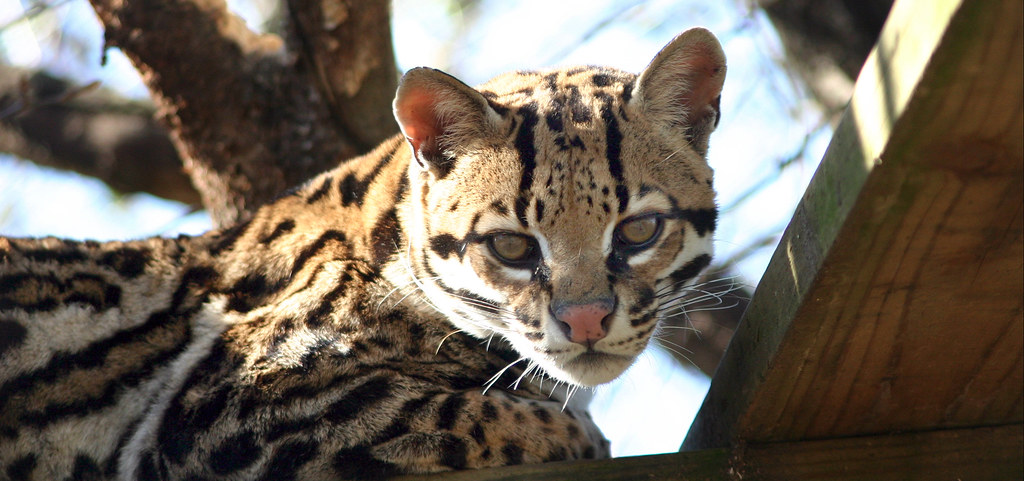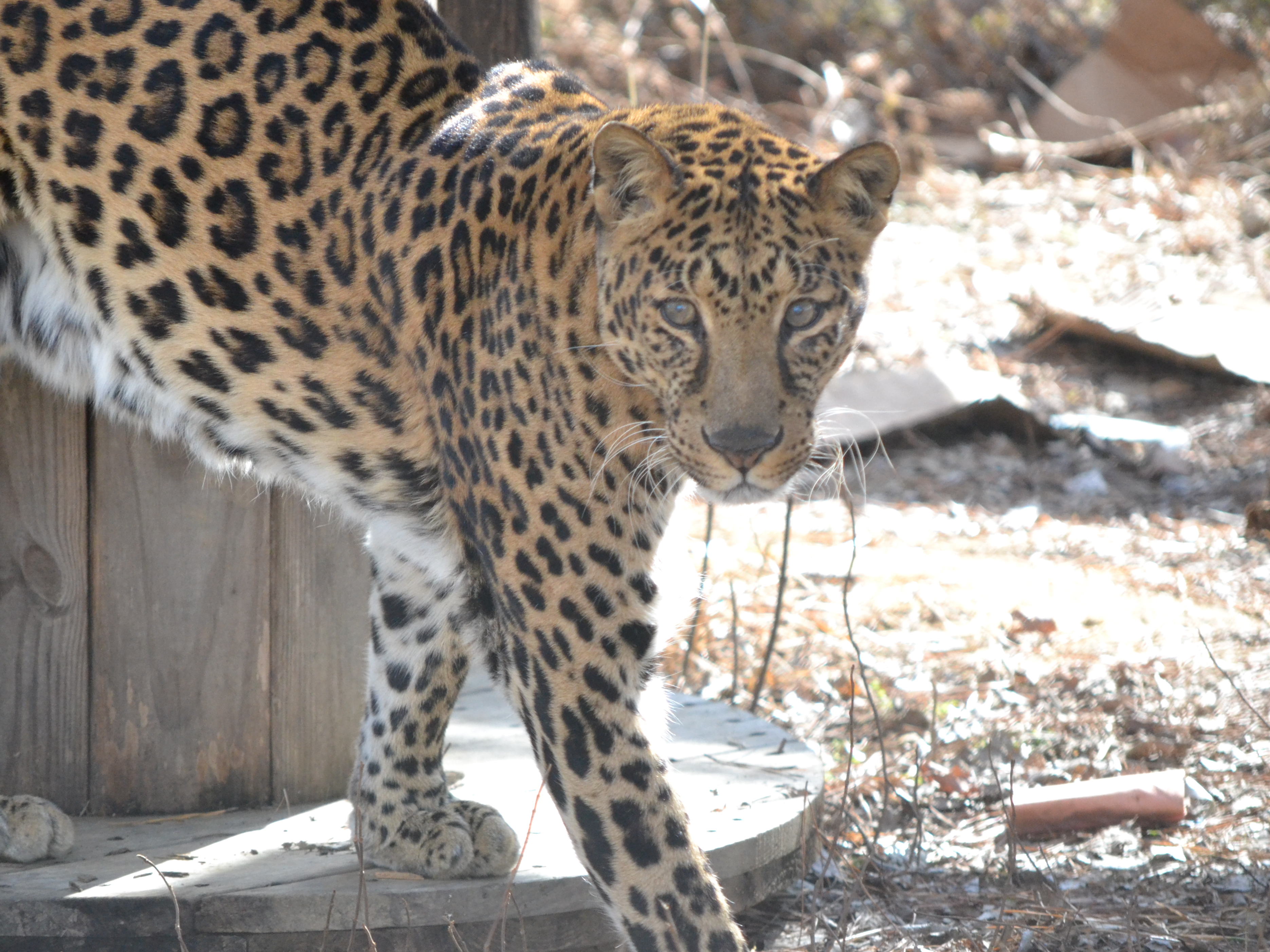
Sam Ocelot
Carolina Tiger Rescue is a 501(c)3 nonprofit wildlife sanctuary whose mission is saving and protecting wild cats in captivity and in the wild.
Ocelots
Ocelots were once poached for their gorgeous dappled coats. Though they are now a protected species, their numbers are decreasing due to a new threat: deforestation.

Ocelots are gorgeous small cats who once roamed all over Central and South America and the Southwestern part of the United States. These opportunistic hunters were primarily poached for their beautiful fur. A single, standard sized coat requires between 30 and 35 ocelots to make.
Ocelots were once bred at Carolina Tiger Rescue as part of Species Survival Plans (SSP’s). Species Survival Plans are used to help ensure the survival of certain species facing extinction. SSP’s help ensure the captive populations have the healthiest and most diverse genes possible, to ensure the survival of the species.
Ocelots are now protected under the Endangered Species act in the U.S. and their numbers continue to rise.
Ocelots are primarily nocturnal animals, finding the best time to be active is at night.

Ocelots in the wild
- Ocelot numbers are slow to rise because they have a long gestation period and only one or two kittens per litter.
- Ocelots have excellent night vision and prefer to do most of their hunting at night.
- Ocelots have large feet to help them traverse the branches of trees; they are excellent climbers.
- Ocelots are very patient hunters and will at times play dead to fool prey into coming closer, making them easier to catch!
Learn More
- Due to being a protected species, ocelot numbers are rising because of the decrease in poaching.
- Currently, the top threat to ocelots is habitat loss due to deforestation.
- Ocelots are keystone species in their ecosystems because they help keep the small mammal and bird populations at a healthy level.
TAKE ACTION
It is important to know and understand that every animal in our ecosystem is vital to its balance. Without ocelots, the small mammal populations would overwhelm the natural resources and put a strain on the rest of the ecosystem.




